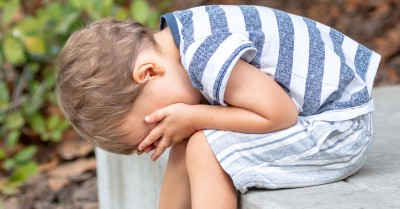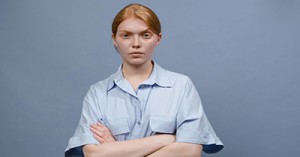Self-regulation can be understood as a suite of skills needed to control and manage one’s own emotions and behaviours in a wide range of setting. Learning self-regulation in the early years has been consistently linked to not just better adjusted adults but also higher levels of academic achievement in later life. The following provides strategies to support children’s self-regulation in the learning environment.
Model Calm Behaviour
Children are innate imitators and one of the quickest ways they learn something is by seeing how their adult caregivers are doing it. So be aware of your own moods and actions, especially before your young learners. If a drawer is stuck yet again or a child is bent on disrupting the class, use calm assertive ways to deal with the situations rather than giving way to expressions of anger or frustration. A good idea is to incorporate mindfulness or deep breathing practices in the daily routine, particularly towards the end of the day when tempers are frayed and minds tired.
Put Routines In Place
Routines offer the comfort of the predictable and the familiar in children’s lives which is especially important in early childhood since this is the time they are just stepping out of their homes to explore the wider world. Thus you can have regular schedules for story times and nature walks while setting ground rules for group work and peer play. With familiar structures in place, children are able to negotiate new stimuli and challenges with better control over their emotions.
Encourage Agency
An essential part of learning self-regulation is to face challenging situations. If adult supervisors are constantly hovering over children and reminding them to ‘be careful’, it is difficult for children to explore their surroundings with sufficient control and autonomy. Instead you can:
- Incorporate choices in your routines like letting children choose the books they want to read or the materials they want to build their structures with.
- Step back from the situation and let them figure out how to make something or solve a problem
- Allow children to make mistakes while ensuring they know they can ask you for help
Bear In Mind Individual Variations
Like adults, not all children have the same capacity for self-regulation. Genetics, home environment and cultural factors often influence degree of emotional arousal and behavioural responses. So one child might get more excited or agitated when encountering something new while another might need more time to warm up to an activity or situation. Keeping in mind unique temperaments and biological make-up can help you avoid a one size fits all solution when teaching self-regulation.
Further Reading
Using Music, Rhythm And Movement To Enhance Children's Self-Regulation - The following article provides information on What Is Self - Regulation, the Links Between Self Regulation and Executive Function, How Music Helps Children Nurture Self Regulation and more.
Understanding Temperament In Children - The following article provides information on What Is Temperament, Understanding Temperament, Teaching Strategies and more.
The Zones Of Regulations- The following provides information on What Are The Zones Of Regulations, How To Use The Zones Of Regulations and more.
Reference:
Regulation Skills In Children, Taylor Francis Online Learning







 As an Educator in Australia, your pay rate falls under the Children’s Services Award 2010. This award states the minimum amount that an employer can
As an Educator in Australia, your pay rate falls under the Children’s Services Award 2010. This award states the minimum amount that an employer can When working as a qualified Early Childhood Teacher (with a university degree) within a service, your rate of pay will come from the Educational Services
When working as a qualified Early Childhood Teacher (with a university degree) within a service, your rate of pay will come from the Educational Services When working as a Diploma Qualified Educator your pay rate is from the Children's Services Award 2010. This Award states your minimum rate of pay
When working as a Diploma Qualified Educator your pay rate is from the Children's Services Award 2010. This Award states your minimum rate of pay When working as a Cert 3 Qualified Educator, your pay rate is from the Children's Services Award 2010. This Award states your minimum rate of
When working as a Cert 3 Qualified Educator, your pay rate is from the Children's Services Award 2010. This Award states your minimum rate of Educational Leaders play a crucial role in their early childhood service by ensuring that the educational program aligns with best practices and supports the holistic
Educational Leaders play a crucial role in their early childhood service by ensuring that the educational program aligns with best practices and supports the holistic In early childhood education and care, ratios are more than a technicality—they are a frontline safeguard. Every child deserves responsive supervision, emotional connection, and developmental
In early childhood education and care, ratios are more than a technicality—they are a frontline safeguard. Every child deserves responsive supervision, emotional connection, and developmental With the new national child safety reforms kicking in on 1 September 2025, early childhood services like yours have a real opportunity to lead the
With the new national child safety reforms kicking in on 1 September 2025, early childhood services like yours have a real opportunity to lead the Here’s a comprehensive Mobile Phone and Smart Watch Policy tailored for early childhood education and care (ECEC) services in Australia, aligned with the latest 2025
Here’s a comprehensive Mobile Phone and Smart Watch Policy tailored for early childhood education and care (ECEC) services in Australia, aligned with the latest 2025 The Sea of Fish Challenge is a national initiative that invites children, educators, families, and communities to create and display fish artworks as a symbol
The Sea of Fish Challenge is a national initiative that invites children, educators, families, and communities to create and display fish artworks as a symbol Across the early childhood education and care sector, educators are sounding the alarm: current staffing ratios are insufficient to deliver safe, meaningful, and developmentally appropriate
Across the early childhood education and care sector, educators are sounding the alarm: current staffing ratios are insufficient to deliver safe, meaningful, and developmentally appropriate


